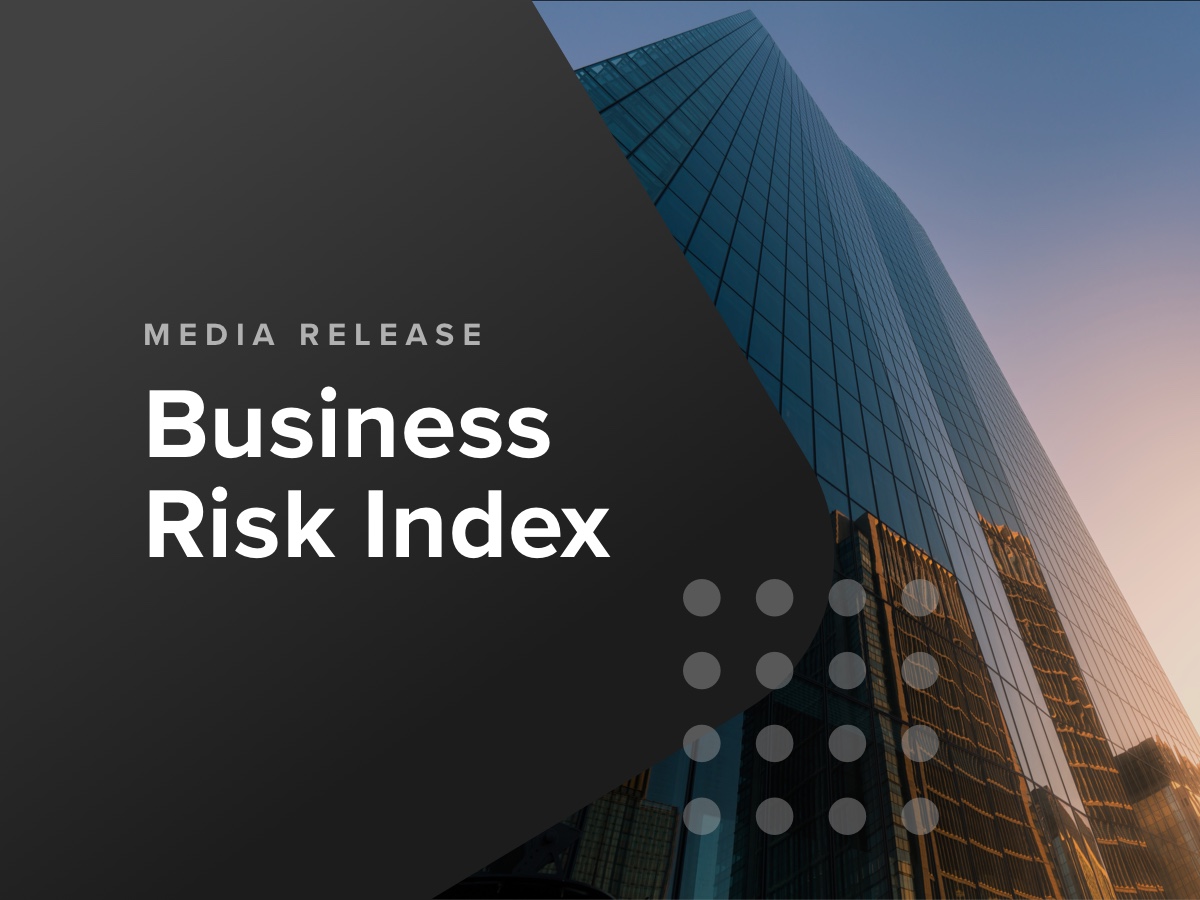The latest CreditorWatch Business Risk Index captures circumstances for December 2021, a month when economic promises began break.
- The CreditorWatch Business Risk Index (BRI) provides unique insights into the health of Australian businesses by region and industry.
- Data from CreditorWatch for December last year reveals a number of industries and regions under pressure.
- CreditorWatch has long said that it will take time for an economic recovery to gather momentum.
- Thanks to Omicron and some inept responses to the impacts of that COVID variant, the recovery time frame has just been extended through to at least the first half of 2022.
- There is a substantial number of Small and Medium-sized Enterprises (SMEs) that survived the lockdowns but some have subsequently fallen over due to a post lockdown experience far more damaging than was anticipated or prepared for.
- Celebrity Chef, Neil Perry, perhaps summed it up the best in a social media post: “I thought we would have certainty this year – how wrong could I have been.”
- Key industries to watch in early 2022 include: Accommodation and Food Services and Arts and Recreation Services.
- Key geographical regions to keep an eye on include: Green Valley and Guilford in New South Wales and Gold Coast – North in Queensland.
December 2021 started with such promise for the entire Australian population. Lockdown restrictions were easing or ending, people were getting out and about more and anecdotal evidence was pointing to a strong Christmas period. Then Omicron hit hard and swiftly. Consumers and businesses lost confidence, demand for face-to-face goods and services dropped rapidly, and many SMEs found themselves in a hole they didn’t and couldn’t have anticipated.
So, what does the latest CreditorWatch Business Risk Index tell us about this turnaround in fortunes?
The December BRI reveals that the three industries most at risk in terms of the probability of payment default are:
Highest
- Food and Beverage Services: 6.9%
- Arts and Recreation Services: 4.7%
- Education and Training: 4.7%
These are industries that have clearly felt the impact of the Omicron COVID variant with public demand waning at the very time it was expected to pick up. The situation has hit private sector frontline services hard.
The BRI reflects the negative impact that the hospitality and retail sector started to feel in mid/late December 2021 as households stepped out into the public again, only to rapidly step back in as Omicron created angst about the perceived safety of heading out and about. That situation will persist in January and February this year.
But it’s not all doom and gloom.
Take a look at the three industries with the lowest probability of default (PD).
Number one is Health Care and Social Assistance with a PD of 3.3 per cent. Don’t take too much notice of this outcome as it is heavily influenced by government funding and the redistribution of resources to combatting COVID cases. Dig below the surface and there is anecdotal evidence of general practitioners leaving their practice due to lack of commercial viability and an increasing trend of ‘elective surgeries’ being delayed or cancelled. It’s still a good number overall, just don’t treat the industry in aggregate.
Agriculture, Forestry and Fishing has the second lowest PD at 3.4 per cent. This industry is in a sweet spot. Many crops and harvests have been strong, prices are relatively high, partly due to the COVID-affected global demand for food. Yes, there are emerging supply distribution problems which will hit the ‘farmland’ first. CreditorWatch data for early 2022 will pick up any signals of any aggregate, adverse impact. For now, let’s simply celebrate some good news.
Manufacturing reveals the third lowest PD at 3.5 per cent. It’s proven to be a resilient industry (a large part of its historical character) and a reasonably favourable exchange rate together with demand for COVID-related light manufacturing products such as masks and signage products have been significant contributors. This industry should remain in reasonable shape in 2022.
One of the key indicators provided by the CreditorWatch Business Risk Index is geographical information which tracks over 300 regions across Australia. The CreditorWatch BRI identifies the best five and worst five performing regions in Australia.
Based on defaults for December 2021 compared to December 2020, plus the probability of default out to December 2022, the five best performing regions (i.e., those at the least risk of credit default) are: –
- Limestone Coast: 66%
- Murray River, Swan Hill: 3.69%
- Grampians: 72%
- Glenelg – Southern Grampians: 3.72%
- Murray and Mallee: 3.92%
All these geographical areas have relatively low population densities, as we have noted before. CreditorWatch data has consistently reinforced how population and distance from capital cities can assist in combating COVID variants.
The COVID cloud cover the Australian economy faces has intensified in early 2022 and camouflages the true commercial state of Small and Medium-sized Enterprises (SMEs) in Australia.
The economy undoubtedly bounced back in the December 2021 quarter and carries some momentum into 2022. That’s very positive but the latest CreditorWatch Business Risk Index (BRI) highlights the challenges many SMEs will face in the first half of 2022 as Australia morphs from dealing with a pandemic to an endemic. If indeed we manage to complete that feat in what is a relatively short time frame.
In terms of contemporary data, this latest update from CreditorWatch highlights that the economic recovery won’t be represented by one big comeback. It will take time, patience, and will be highly divergent across industries and geographical areas.
Defaults
The number of defaults fell sharply in December 2021. That is hardly surprising given a spike of 53 per cent in November!
Throughout 2021 the number of defaults averaged far lower than in 2020. Taking the last data points, defaults fell by 5.1 per cent in the December 2021 quarter compared to the September quarter. That is an artificial result. Businesses are still being protected by a relative degree of leniency still being afforded them by financial institutions and creditors. How that dynamic plays out in 2022 will tell us a great deal about the shape of Australia’s economic recovery against the backdrop of the uncertainty everybody faces.
Credit enquiries
The number of credit enquiries dipped in December following a hefty jump in November – which represented the largest monthly increase since March 2021. Credit enquiries fell by five per cent in the December 2021 quarter, although that still left this key metric up by 12 per cent compared to the December 2020 quarter.
Any sustained improvement in credit enquiries would provide a key leading indication of brighter business activity and consequently overall economic drive. It will be important to keep an eye on a range of industries in terms of how they look to be faring in early 2022, including retail, wholesale and distribution, and hospitality.
External administrations
The number of external administrations fell slightly in December 2021. No big thing, really. The number increased by six per cent over the December 2021 quarter – a far more reliable metric to assess. External administrations increased by five per cent when compared to the December 2020 quarter.
Overall, you’d have to say that the number of external administrations is displaying great signs of resistance against confronting economic times. That may well not last in 2022.
Court actions
The number of court actions spiked by 85 per cent in November 2021, although that result wasn’t seasonally adjusted. Then there was an unsurprising dip in December. In the December 2021 quarter court actions still increased by 26 per cent to be up by 42 per cent compared to the December quarter of 2020.
CreditorWatch has previously noted that the number of court actions is higher than it has been for some time. The lack of ability to appear in person due to COVID did suppress court numbers, but the system has adjusted and that is why average numbers are probing higher. Expect to see rising court actions in 2022.
Outlook
The Australian economy undoubtedly bounced back in the December 2021 quarter and carries some momentum into 2022 but is enduring a bumpy ride as Omicron bites. With such high vaccination rates we will push through, but many SMEs have been hit hard. The promise of a relatively strong start to 2022 for areas such as retail and wholesale trade, together with food and hospitality simply hasn’t materialised.
‘Shadow COVID’, where the Australian public goes into self-imposed lockdown, and is reticent to engage in social activities such as going on a holiday or heading out for dinner has been quite dominant.
Harley Dale
CreditorWatch Chief Economist



